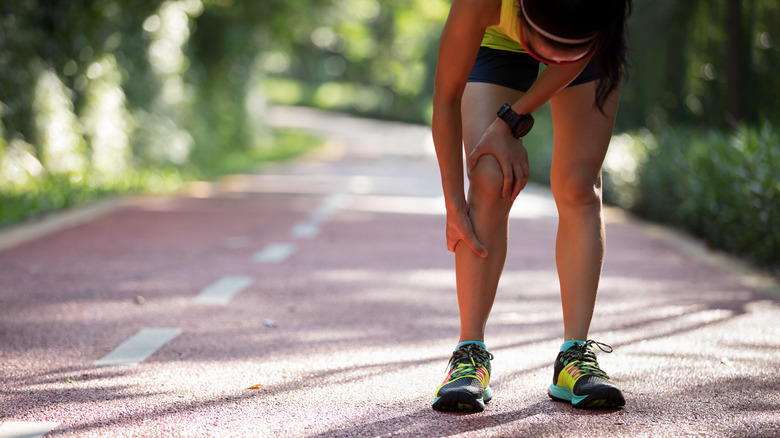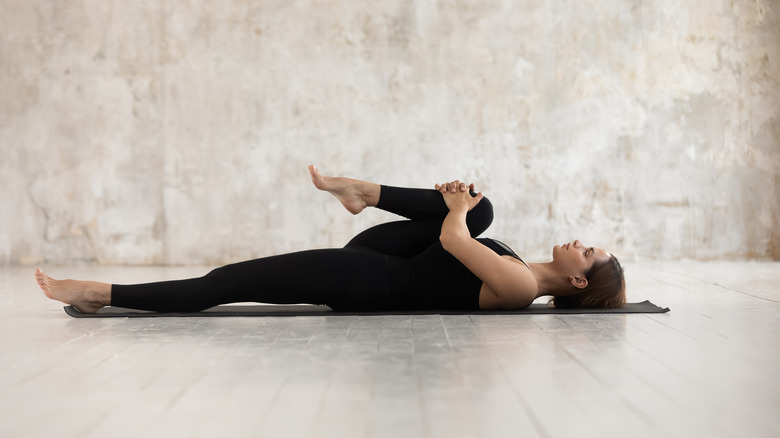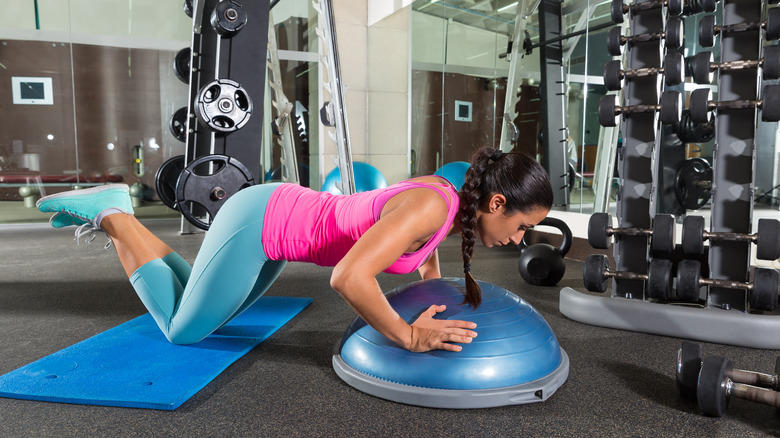The Best Exercises To Do With Joint Pain
Wondering what exercises to do with joint pain? You're probably thinking about stretching and low-impact activities like swimming or yoga. These activities are generally safe, but you can do much more than that. It all comes down to your symptoms and what's causing them in the first place. If you have an injury, it's important to give your body enough time to recover. In this case, low-impact workouts are your best bet. However, if you have joint pain because of arthritis or prolonged sitting, you can tweak your training routine based on how you're feeling.
The worst thing you can do is to avoid exercise altogether. While it's true that exercise can be painful at first, it gets easier over time. In one study, researchers asked a group of individuals with knee or hip pain to exercise twice a week for two months. Most subjects experienced exercise-induced pain flares during the first few days, but their symptoms improved with every workout, per Osteoarthritis Cartilage.
"Yes, it hurts, but the more you rest, the more out of condition you get, and then the more it hurts," said personal trainer Chris Gagliardi in an interview with CreakyJoints. "Not moving your joints can make the progression of arthritis worse," he added. Moreover, there's evidence that regular exercise can relieve joint pain and improve physical function, according to the Cochrane Database of Systematic Reviews.
Stretch your muscles and joints for flexibility
The more you sit, the stiffer your joints get. Over time, prolonged sitting can affect your neck, back, and joints, causing pain. This habit is associated with sciatica, bulging discs, knee pain, flat feet, and weak hips, sports medicine physician Elan Goldwaser explained to Health Matters at the New York-Presbyterian Hospital. "To maintain good posture, the hips have to battle against gravity. As hips weaken and gravity wins out, the legs collapse inward, putting pressure on your kneecaps and eventually causing the feet to flatten," he explains.
One way to counteract the effects of sitting is to stretch your muscles and joints regularly. Do it even on your rest days to maintain your flexibility and range of motion. The clamshell, the bird dog, and other basic exercises stretch and strengthen your hips, leading to increased mobility. The Arthritis Foundation recommends performing static stretches after a five- to 10-minute warm-up. Dynamic stretching is suitable before, during, or after exercise.
Static stretching involves holding a muscle in the same position for 20 to 45 seconds, explains Leigh-Ann Bramble, a physical therapist at Hospital for Special Surgery (HSS). For example, you may stretch your hamstrings or quads to prevent injuries while running. Dynamic stretches, such as walking lunges and torso twists, keep your muscles and joints flexible, says Dr. Bramble. These movements also prepare your body for exercise and may reduce injury risk.
Keep your joints healthy with these exercises
Your workout routine should include a mix of resistance training, stretching, and aerobic activities. Body awareness exercises, such as yoga, Pilates, and tai chi, are beneficial, too. The American College of Rheumatology (ACR) recommends starting your day with active range-of-motion (AROM) and stretching exercises to improve joint flexibility and function. Perform AROM exercises every day and stretching exercises four to five times a week.
Weak muscles can leave your joints vulnerable to injuries — that's why you should add resistance training to your workouts. Choose a load that allows you to perform eight to 10 reps with good form without causing joint pain. Feel free to modify these exercises based on your fitness level. If, say, you can't do standard push-ups, try to perform bent-knee push-ups or wall-push-ups. Consider using a BOSU ball or push-up handles to take some of the stress off your wrists.
Aerobic exercise is just as important as resistance training. However, you may not be able to run or engage in high-intensity interval training if you have bad knees. Focus on what you can do rather than what you can't. For example, you could cycle on a stationary bike to avoid putting strain on your back. The treadmill can be harsh on your knees, so try using an elliptical trainer instead. Suspension training systems, rowing machines, and cross-country ski machines, such as the Concept2 SkiErg, are suitable for those with back, hip, or knee pain.


